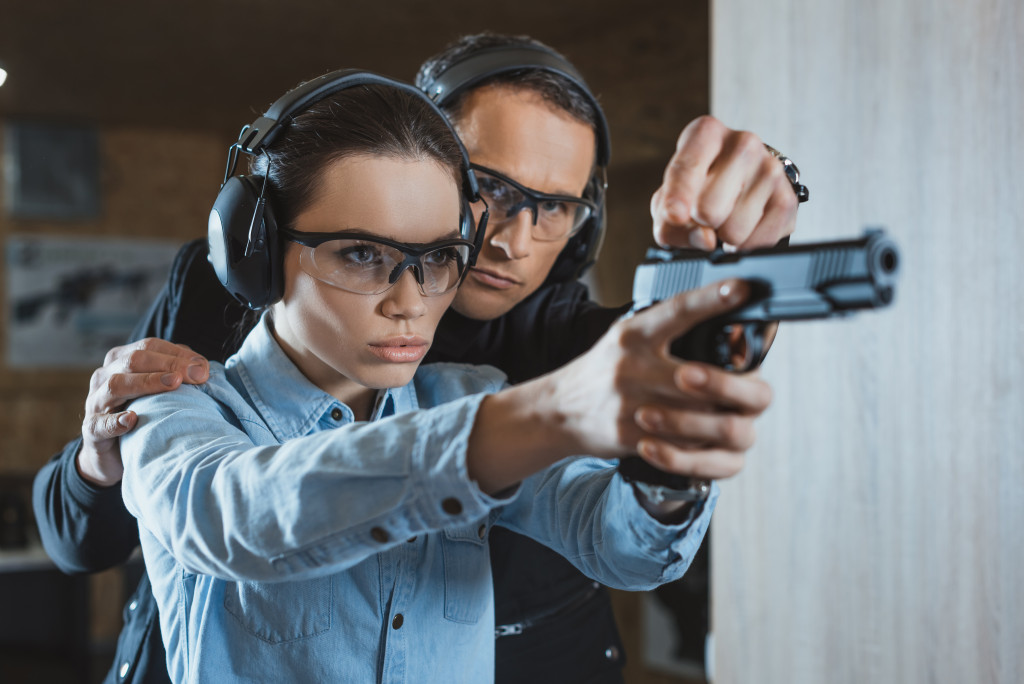Gun violence is a huge problem in the United States. By June 2022, there had been 247 mass shootings, 27 of which occurred in schools. That averages out to more than one mass shooting per day. In terms of gun-related accidents, there have been 2304 injuries, while there have been 2040 deaths. Reducing gun violence is a complex issue, especially because the enforcement of already existing and inadequate gun control laws is not at the top of the list of law enforcement. One measure that can help is gun education, especially in reducing the number of accidental injuries and fatalities.
What Is Gun Education?
Gun education is a set of instructional programs that aim to promote responsible firearm ownership and use. It typically covers topics like firearms safety, marksmanship, and self-defense. Gun education programs can be offered through schools, community organizations, or gun ranges.
The Benefits of Gun Education
One of the main benefits of gun education is that it can make people feel more comfortable around firearms. A lot of gun violence is committed by people who are afraid of guns. They might not have ever held one before, or they might have had a negative experience with firearms (like being shot). As a result, they see guns as dangerous objects that are to be avoided. But when people receive gun education, they realize that guns are just tools. They’re not inherently good or evil; it’s all about how they’re used.
With the proper training, anyone can learn to safely use and store a firearm. Gun education can also teach people about the different types of firearms and their functions. This can help people make more informed choices if they do decide to purchase a gun. Gun education is best undertaken before purchasing a gun.
In addition to making people feel more comfortable around guns, gun education can also help reduce accidents and mistakes. One study in Texas found that mandatory hunter safety courses led to a substantial decrease in the incidence of hunting accidents. Unfortunately, there are no federal laws that require firearm safety training before buying guns; this may be one thing that may be needed to reduce accidents.

How to Educate People about Guns Safely
A typical gun safety course will cover a variety of topics, including how to handle a gun safely, how to store a gun safely, how to identify a safe shooting range, and the laws governing firearms. The course may also include a hands-on component, where students are allowed to handle firearms under the supervision of a trained instructor.
1. Learning how to handle guns safely
Learners are taught about the different types of firearms and their functions. They learn about the proper way to hold and aim a gun, and how to properly discharge it. They also learn about the dangers of mishandling firearms, and the importance of always following the safety rules.
2. Learning how to store guns safely
Learners are taught about the different types of gun safes, and how to use them correctly. They also learn about the importance of keeping guns out of reach of children and other unauthorized users. This should be one of the most detailed parts of the course, since a stolen gun can be misused in an endless number of ways, including crime.
3. Learning how to identify safe shooting ranges
Learners are taught about the different types of targets, and how to select a safe shooting range. They also learn about the dangers of shooting in an unsafe environment. A safe shooting range is well-lit and adequately staffed, and it should have safety equipment in good condition. The presence of clutter and debris in a range is already a good indicator of the range’s status. The staff should have certifications to make sure that they are qualified for their role. The presence of modern features also show commitment to safety and improvement; a virtual shooting range with digital targets is safer than a traditional shooting range.
4. Learning about the laws governing firearms
Learners are taught about the different types of firearms licenses, and the requirements for each license. These licenses are governed by state-specific laws, so it is important that the trainer knows their local laws and can teach this clearly to aspiring gun-owners. Learners must also learn about the restrictions that apply to different types of firearms, which also vary by state.
Conclusion
Gun violence and accidents are a huge problem in the United States, but gun education can help reduce them. By teaching people about firearms safety, marksmanship, and self-defense, gun education programs make people feel more comfortable around guns and less likely to commit accidents or mistakes. If you’re interested in reducing gun violence in your community, consider offering or taking part in a gun education program near you.







